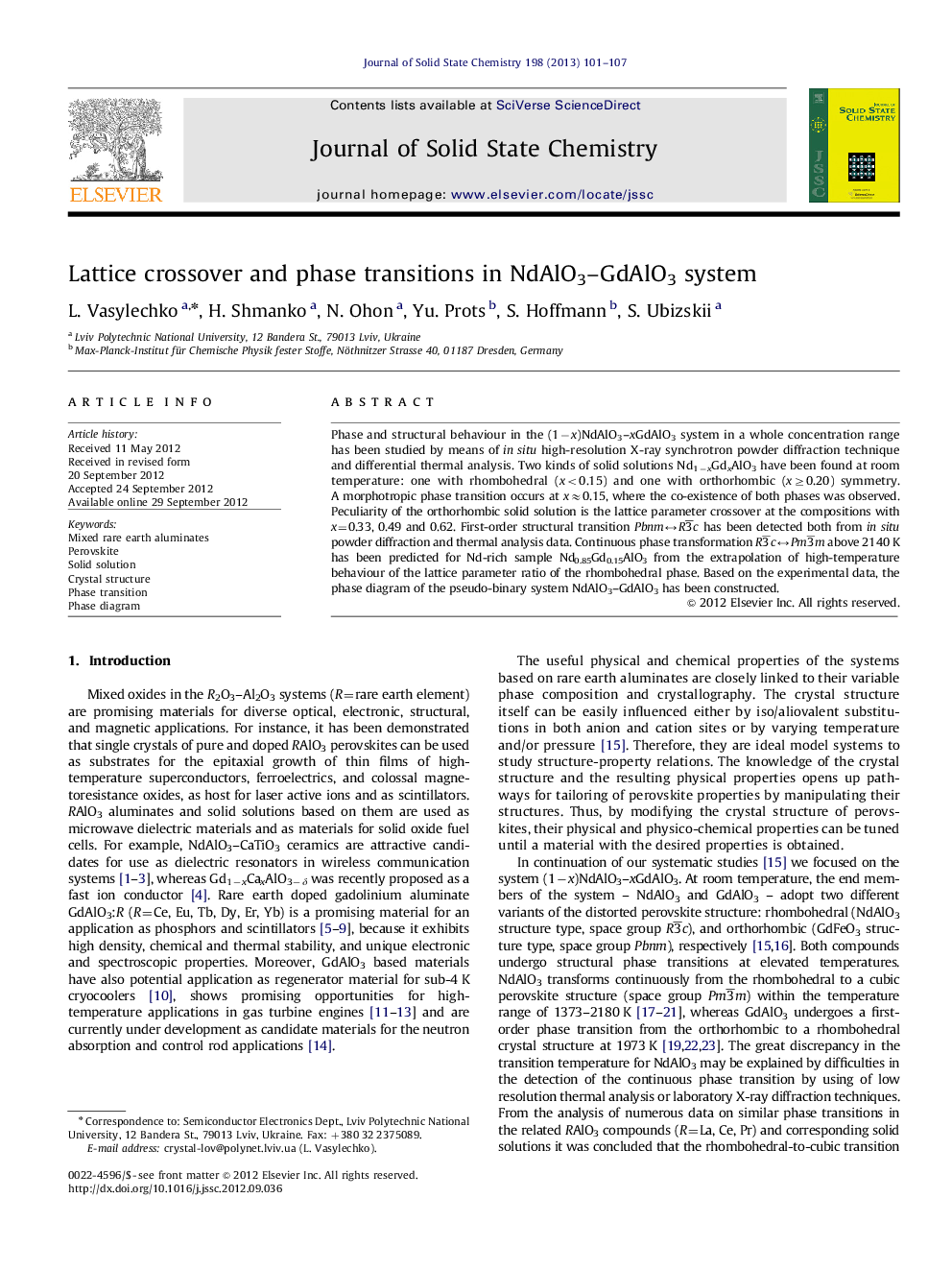| Article ID | Journal | Published Year | Pages | File Type |
|---|---|---|---|---|
| 1331368 | Journal of Solid State Chemistry | 2013 | 7 Pages |
Phase and structural behaviour in the (1−x)NdAlO3–xGdAlO3 system in a whole concentration range has been studied by means of in situ high-resolution X-ray synchrotron powder diffraction technique and differential thermal analysis. Two kinds of solid solutions Nd1−xGdxAlO3 have been found at room temperature: one with rhombohedral (x<0.15) and one with orthorhombic (x≥0.20) symmetry. A morphotropic phase transition occurs at x≈0.15, where the co-existence of both phases was observed. Peculiarity of the orthorhombic solid solution is the lattice parameter crossover at the compositions with x=0.33, 0.49 and 0.62. First-order structural transition Pbnm↔R 3¯с has been detected both from in situ powder diffraction and thermal analysis data. Continuous phase transformation R 3¯с↔Pm 3¯m above 2140 K has been predicted for Nd-rich sample Nd0.85Gd0.15AlO3 from the extrapolation of high-temperature behaviour of the lattice parameter ratio of the rhombohedral phase. Based on the experimental data, the phase diagram of the pseudo-binary system NdAlO3–GdAlO3 has been constructed.
Graphical abstractConcentration dependencies of normalized lattice parameters of Nd1−xGdxAlO3 perovskite solid solutions.Figure optionsDownload full-size imageDownload as PowerPoint slideHighlights► Two kinds of solid solutions Nd1−xGdxAlO3 were found in the NdAlO3–GdAlO3 system. ► Morphotropic transition between both perovskite phases occurs at x≈0.15. ► Lattice parameter crossover was found in orthorhombic solid solution. ► Temperature driven first-order phase transition Pbnm↔R 3¯с was found in Nd1−xGdxAlO3. ► Phase diagram of the pseudo-binary system NdAlO3–GdAlO3 has been constructed.
